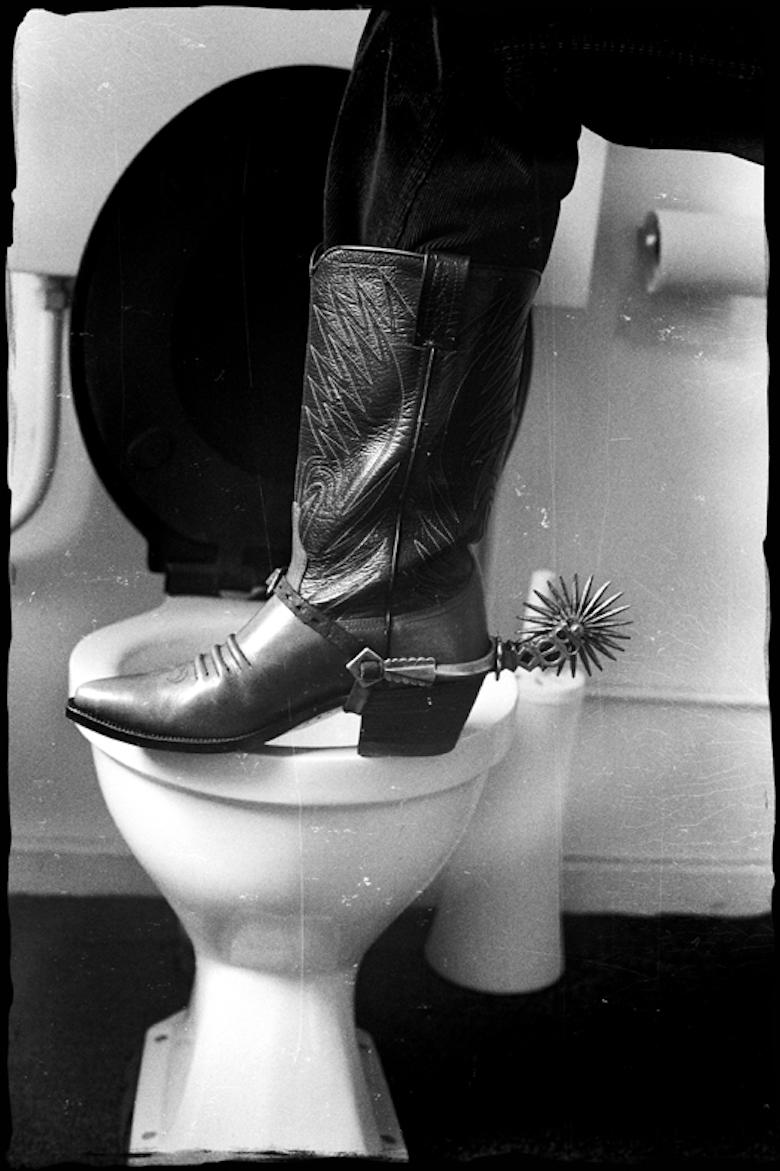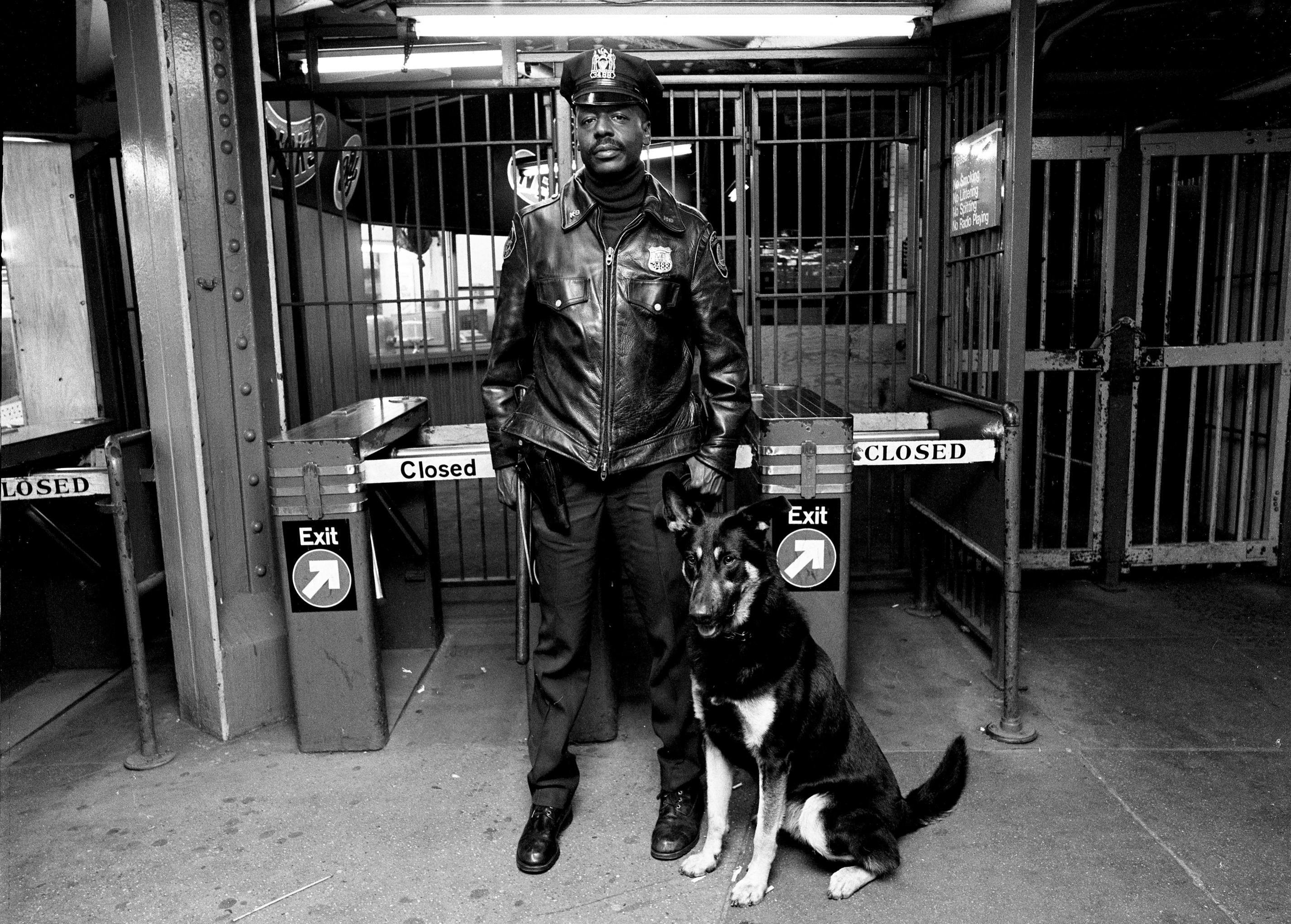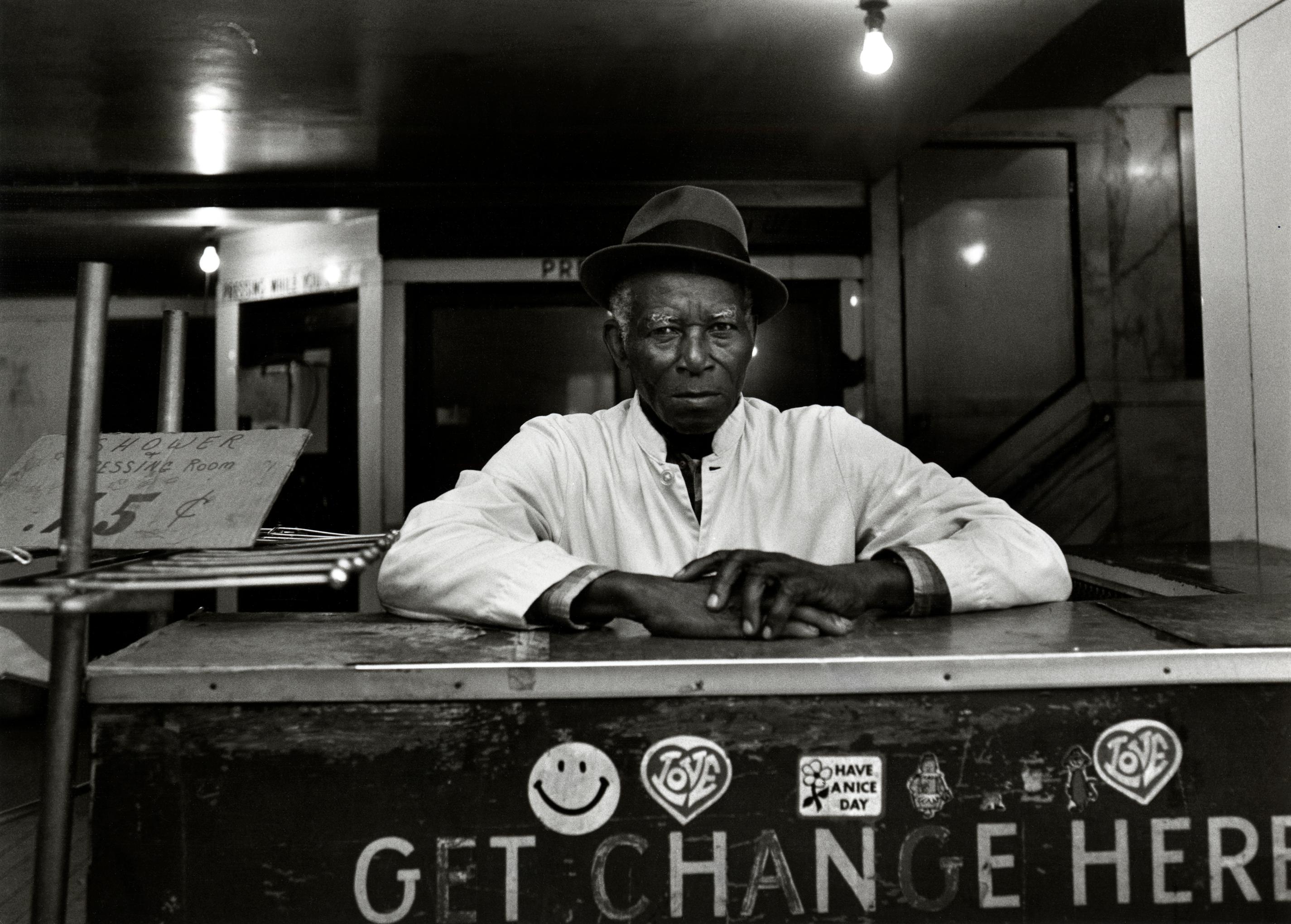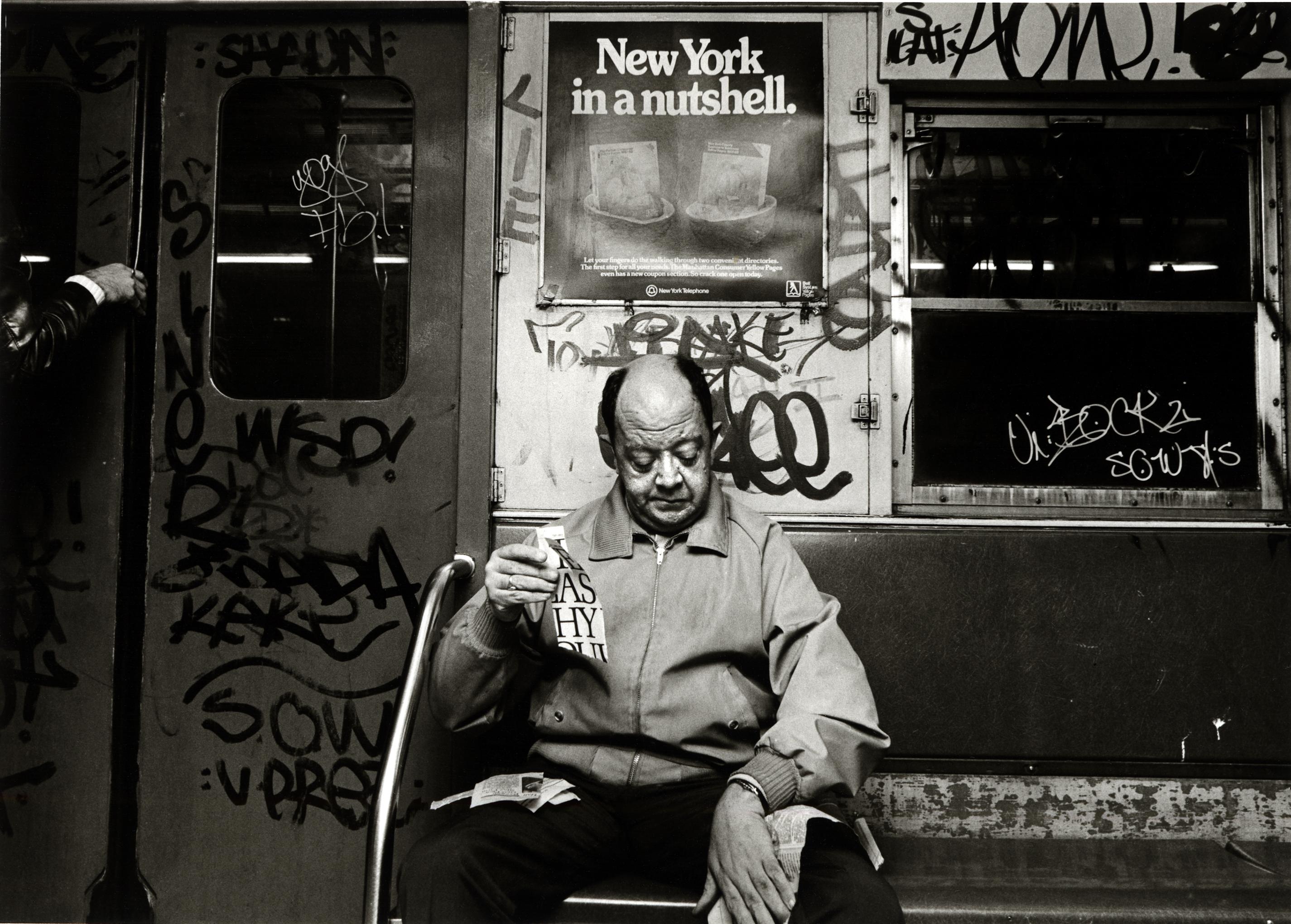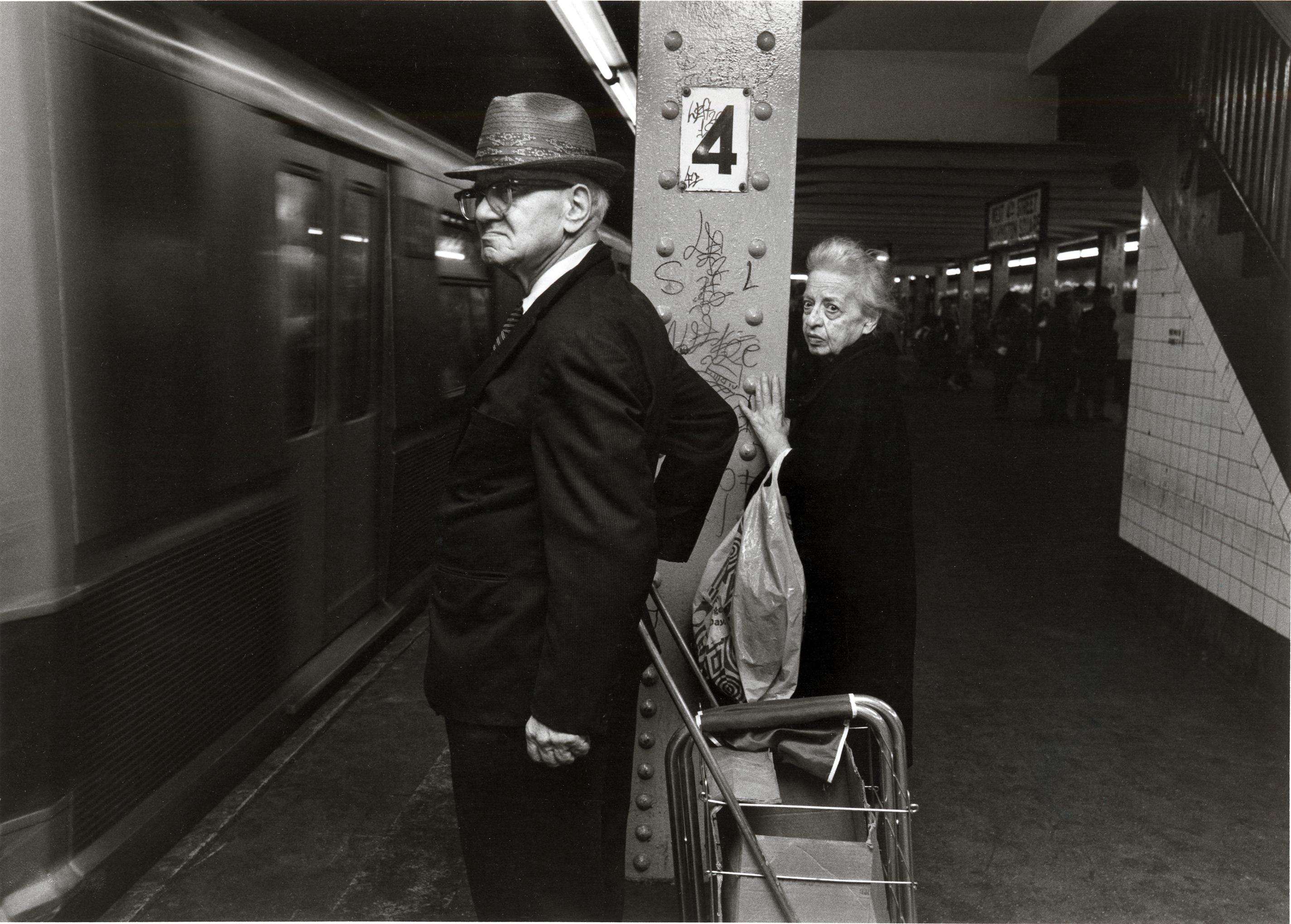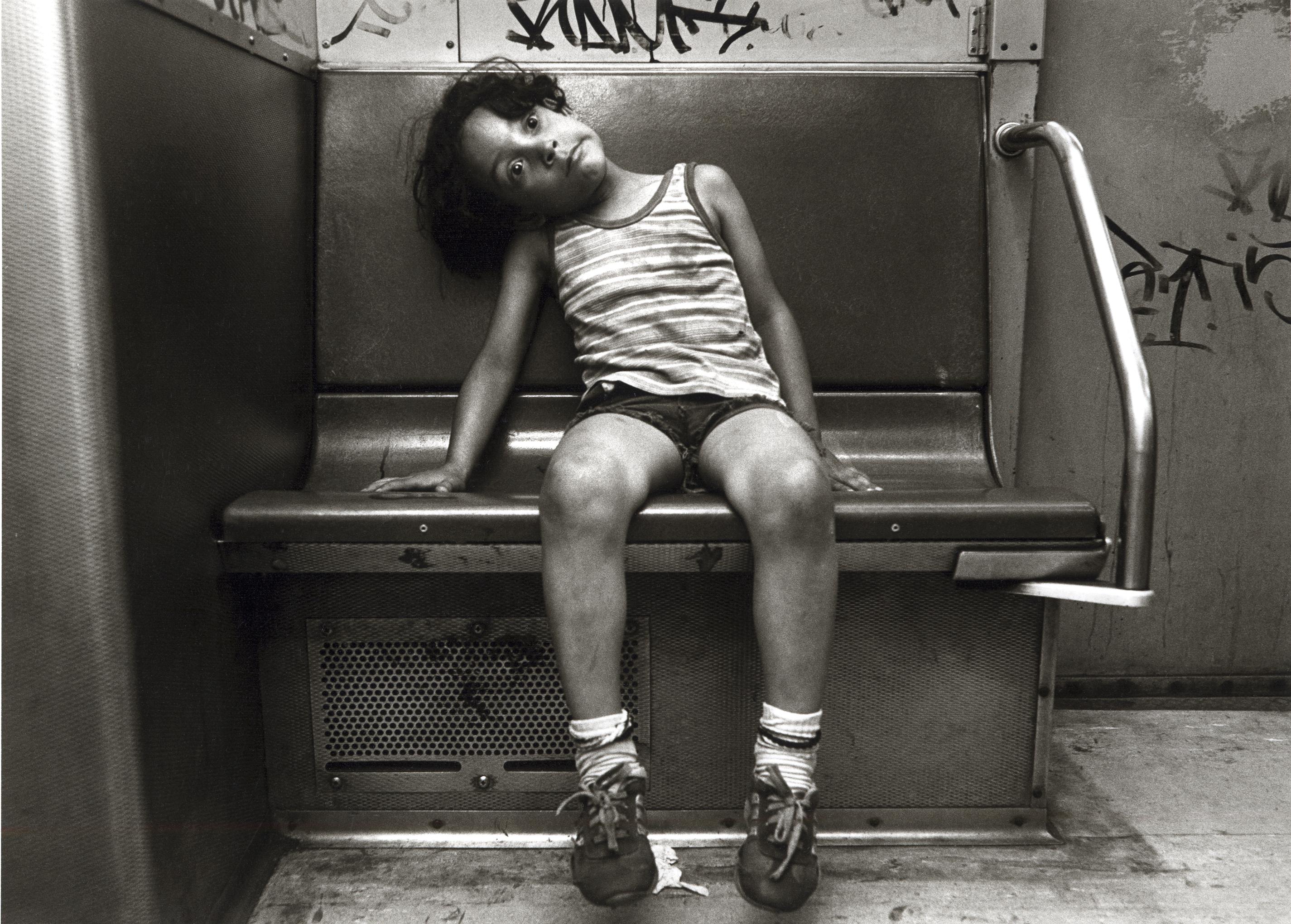Items Similar to Photograph from Vintage Negative Paris 1960s Photo Peter Goldman French New Wave
Want more images or videos?
Request additional images or videos from the seller
1 of 8
Peter Emanuel GoldmanPhotograph from Vintage Negative Paris 1960s Photo Peter Goldman French New Wavec.1960s
c.1960s
About the Item
Archival Fine Art Prints, Photo Rag Baryta
Sizes: 21.85 x 14.55 in. Edition of 6
Recently rediscovered, never printed negatives have just been digitally remastered and editioned. They are newly printed.
This listing is for the first photo. the other images are just for documentary reference.
Peter Goldman was a celebrated filmmaker of the underground cinema and the only American link to the French New Wave during the sixties. At that time, he also started an intermittent career as a journalist. Later, in the seventies, he composed and recorded music. He spent the next fifteen years as a writer and consultant on foreign affairs. Recently, he became a novelist. in 1962, he began to practice straight photography while he was filming Echoes of Silence, his first movie. Simultaneously, he used his still camera to register the kind of life he shared with his friends and his perceptions of New York City, mainly of his neighborhood, Greenwich Village. In 1966, he settled in Paris temporarily. For almost fifty years, his negatives were forgotten and kept in storage in the US and Paris. Several months ago they reappeared in a box sent to him from Paris.
Goldman’s small and compact vintage negative archive introduces an unknown chapter in the history of American photography from the early to the middle sixties and immediately beyond. Sex, love, desire, passion, drugs, nightlife, sadness, despair, loneliness have its place in this archive. A sensibility that approximates Goldman's would not appear in photography until the following decade with Nan Goldin, the photographer of “sexual dependency.”
Goldman's straight photography
"My straight photos, which miraculously reappeared after 50 years in a box sent from Paris, resemble my films to some extent and differ in others. The photos were mostly made at the time I was shooting Echoes and in the year following, before making Pestilent City, The Sensualists, and Wheel of Ashes in Paris. I would stage some scenes almost like I was directing a film—faces and shots of longing and loneliness, while many other photos were taken of my wives, children and girlfriends, as well as streets of the Village, especially at night. The city is often in the foreground instead of the background, as in the films. The camera is capturing life on the streets."
PETER EMANUEL GOLDMAN
Singled out by Jean-Luc Godard in Cahiers du Cinema in 1967 as a great new American filmmaker an dcalled “a myth . . .an apostle of the unique” by the newspaper Liberation , Peter Goldman once seemed likely to be the next giant of American Cinema.
Had he chosen to go to Hollywood after the great critical success of his first feature, Echoes of silence, his name might well be as recognized today as such of his New York contemporaries as Martin Scorsese and woody Allen. But Peter Goldman went in the opposite direction—to Paris instead of Hollywood—and, in his third feature, Wheel of Ashes, forged a c critical link between new American cinema and the French New Wave.
Goldman’s first feature film, Echoes of Silence, was so stylistically and thematically different that it astounded critics on both sides of the Atlantic. Writer Susan Sontag called Goldman “the most exciting filmmaker in recent years,” and Henri Chapier , writing in Combat, called Echoes of Silence, “ the masterpiece of all , ’new’ and ‘young’ films . . it is the most poignant film ever made about the profound despair of the young.” Newsweek called Echoes of Silence “the quintessence of the avant-garde spirit.”
containing one of the truest subtlest and moving sequences ever filmed.” Roger Ebert wrote: It is interesting, sincere and worthy of serious attention. . there is not a false moment in it.” In 2014, with release of Echoes on video, film critic Philippe Azoury wrote in Les Inrocks, “ Echoes of silence was our favorite film . . Those who had the opportunity to see it formed a secret society,” and Cahiers du Cinema called Echoes of Silence and Wheel of Ashes, Beautiful films . . beautiful Jewels .
brought out from the forgotten.” An on-line critic called Goldman “the forgotten genius of American Cinema.” In his life, Peter Goldman was also a journalist, a writer of fiction and non-fiction, and advisor to prime ministers, senators and congressmen, a baseball player, a musician and a first-class still photographer. Recently thousands of Goldman’s long-forgotten, haunting and powerful still photographs have been rediscovered and are now being made available to the public. He worked in the same period as many celebrated street photographers, Lee Friedlander Eugène Atget, Walker Evans, William Klein, Diane Arbus, Vivian Maier and Robert Frank. His work has been recently rediscovered, although his films have been continuously shown at festivals around thee world.
He was born in New York in 1939, attended Brown University (history major, magna cum laude, phi Beta Kappa), studied a year at the Sorbonne, where he realized he didn’t want to be an academic. Peter took film courses at City college of New York and New York University, made first small films in 8mm and 16mm. In the early 1960’s he discovered that he was very good with a movie camera and made Echoes of Silence, a film about the searching, loneliness, sexuality, despair and oppression of the city, for $1500. The film played at the new York Film Festival and was awarded a special director’s prize at the Pesaro, Italy, Film Festival. In 1965 he made his second feature film, The Sensualists (all copies have unfortunately disappeared) and the 16mm short, Pestilent City, with its powerful and despairing images of the underside of New York, which was shown twice at the new York film Festival.
While making these films in New York, he was acquainted with Andy Warhol, Yoko Ono, Susan Sontag, Carly Simon, Gregory Corso, Jean-Luc Godard (whom he met at the New York. Film Festival), Larry Rivers Brian DiPalma and many others. Goldman and Warhol had a semi-serious, semi comic verbal battle in The Village Voice about cinema.
He was awarded a Fulbright scholarship to Paris for film in 1966 (with the help of Jean-Luc Godard) and made a French-language feature film, Wheel of Ashes, starring French actor, Pierre Clementi. Wheel of Ashes was shown at the Venice film Festival in 1968 and at the Cannes film Festival About Wheel of Ashes, Cahiers du Cinema wrote: “None of us who saw this film could avoid being pierced to the heart . . a cinema fundamentally different. Tages Anzeiger (Germany) echoes this: “We are in the presence of an amazing filmmaker who makes films that are without parallel today.” Irish film critic, Fergus Daley, said that Wheel of Ashes was “one of the most beautiful and formally challenging
works in the history of cinema . . a breathtaking experience. Politiken (Denmark) wrote: “A film which continues in one thoughts long after one has seen it. The film is not a mirror image of reality; it is reality itself.” Professor of Cinema and critic Emeric de Lastens wrote after the video release of Wheel of Ashes, that the film is “the missing link between the New York Underground and the Parisian new Wave . . . Goldman crossed the 1960s like a meteor . . There are few bodies of work as living and enlivening as
that of Peter Emanuel Goldman, the eternal youth of cinema.”
“The intensity, the despair, the haunting images of his films are also captured in his still photos,” said art dealer Aryeh Wuensch. A leading curator and advisor the Getty Museum, Jose-Antonio Navaretti, said that Goldman’s black and white photography “was as good as anything that has ever been done . They are museum quality.”
Goldman served as a Middle East consultant for many senators and representatives as well as being invited to meet with President Reagan and his aides. In the 1980’s he became a Torah-observant Jew. He also did short stints as a journalist, working for the Providence Journal, (1962, NBC Radio News (1985) and writing an art column “Shopping Paris Galleries” for the Paris Herald Tribune(1962.) In 1969 he played third base for the national baseball champions of France, Les Paris Pirates.
Mr. Goldman has three children and has said “that my children are the center of my life.
“Many people say that I have lived a fascinating life,” said Goldman,” this may be so, but it has also been a life of a lot of turmoil—both inner and outer--torment and conflict. My films and photos reflect this.” The rediscovery at the age of 75 of these extraordinary photographs from the 1960s is adding a new chapter to an already fascinating life.
Films
1965, Echoes of Silence (Feature), New York. Pestilent City (Short), New York.
The Sensualists (Feature), New York
1968, Wheel of Ashes (Feature), Paris
Awards and Festivals
Special Director’s Award for Echoes of Silence, Pesaro, Italy, Film Festival, 1966.
Film Festivals: Echoes of Silence: New York, London, Pesaro, Torino, Cannes (Quinzaine) Wheel of Ashes: Venice, Hof (Germany) Pestilent City: New York
Collections
The Museum of Modern Art, New York (Echoes of Silence, Wheel of Ashes)
Centre Pompidou, Paris (Pestilent City)
Menil Collection, Houston (Wheel of Ashes)
Cinématheque Française, Paris (Echoes of Silence) and
- Creator:Peter Emanuel Goldman (1939)
- Creation Year:c.1960s
- Dimensions:Height: 14.55 in (36.96 cm)Width: 21.85 in (55.5 cm)
- Medium:
- Movement & Style:
- Period:
- Condition:
- Gallery Location:Surfside, FL
- Reference Number:1stDibs: LU3824718061
About the Seller
4.9
Platinum Seller
These expertly vetted sellers are 1stDibs' most experienced sellers and are rated highest by our customers.
Established in 1995
1stDibs seller since 2014
1,546 sales on 1stDibs
Typical response time: 1 hour
- ShippingRetrieving quote...Ships From: Surfside, FL
- Return PolicyA return for this item may be initiated within 3 days of delivery.
More From This SellerView All
- Jerusalem 1967 Vintage Silver Gelatin Photograph Western Wall Kotel HamaaraviBy Richard GordonLocated in Surfside, FLRichard Gordon was born in Chicago in 1945. He studied Political Science at the University of Chicago and did not begin photographing until he worked at a photography studio in 1965. Early in Gordon’s career, Robert Frank critiqued his work and stated that he “loved photography too much.” Gordon frequently makes photographic references in his work and pays homage to the photographers who influenced him: Eugène Atget, Walker Evans, Robert Frank and Helen Levitt. Bookmaking has been an important element of Gordon’s photography from the beginning; he created his own press, Chimaera Press, and published Meta Photographs (Chimaera Press, 1978), One More for the Road: The Autobiography of a Friendship 1966-1996 (Flâneur Bookworks, 1996), American Surveillance: Someone to Watch Over Me (Chimaera Press, 2009), and Notes from the Field (Chimaera Press, 2012), as well as handmade and limited edition books. Richard Gordon’s photographs are represented in many institutional collections including: Art Institute of Chicago; Bibliothéque National, Paris; Centre Nationale de la Photographie, Paris; Corcoran Gallery of Art; J. P. Getty Museum (Wagstaff Collection); Library of Congress; Museum Ludwig, Cologne, Germany; Museum of Fine Arts, Houston; New York Public Library; Oakland Museum of Art; San Francisco Museum of Art; Santa Barbara Museum of Art; Stanford Museum of Art; and University of Colorado, Boulder. From the David C. and Sarajean Ruttenberg Collection The Ruttenbergs are longtime art lovers who have collected abstract expressionist paintings, African art, sculpture, graphics, old watches and photographs-lots and lots of photographs. They started collecting them in the 1960s when the medium was still the stepchild of the arts. They kept collecting until they had more than 3,000 prints, 99 of which are in the Art Institute exhibit, ``The Intuitive Eye: Photographs from the Collection of David C. and Sarajean Ruttenberg.`` The show encompasses the entire history of photography with black-and-white and color prints from every genre, It includes street photography by Walker Evans and Garry Winogrand, glamour shots by Edward Steichen and Richard Avedon, nudes by Robert Mapplethorpe and Nicholas Muray...Category
1960s American Realist Black and White Photography
MaterialsBlack and White, Silver Gelatin
- Israeli Jewish Prayer Tallit Photogram Op Art Kabbala Photograph Judaica PhotoBy Yakov KaszemacherLocated in Surfside, FLThis one is signed and has the name of the city Meron hand written on it. It is printed on a wove matte paper. Ya'acov Kaszemacher, well-known artist and photographer whose unique im...Category
1980s Contemporary Figurative Photography
MaterialsPhotographic Paper
- Contemporary Chinese Large Scale Photograph B&W Print Photo "Some Days" Ed 3/10Located in Surfside, FLWang Ningde (China, b. 1972) "Some days no. 23". Size: 48'' x 64.75'', 122 x 164 cm (image); 52'' x 69'', 132 x 175 cm (frame). Chromogenic print (c-print)...Materials
Photographic Paper
- Vintage Silver Gelatin Print Photo Israel Museum Sculpture Jerusalem PhotographLocated in Surfside, FLSusan Hacker -Israel Museum, Sculpture Garden, Jerusalem, Israel, 1979 Silver Gelatin black/white photograph, printed in 1983, hand signed, titled (Jerusalem) and noted. There is no edition size stated Location (Jerusalem), shoot date (1979) and photo print date (1983) and signature in pencil on the bottom back of the photograph. This is of the sculpture Woman skipping rope by Luciano Minguzzi located in the Isamu Noguchi designed sculpture garden at the Israel Museum Image size: 22 x 33 cm Paper size: 28 x 35.5 cm Susan Hacker (1949) is an American photographer and author. She developed and expanded the photography department at Webster University in St. Louis. Her work is in the possession of at least 25 major museums and libraries around the world. There are also many books and publications about her. Has always experimented with many photographic techniques. Hacker is recognized as an innovator of the modern photography art. Susan Hacker Stang (born Susan Hacker, October 19, 1949) is an American photographer, author, and educator. Stang served on the faculty of communications at Webster University in St. Louis from 1974 through 2015 and now holds the title Professor Emeritus. She helped found and build the respected photography program there, heading it for most of her tenure at the university. Her work has been collected by more than 25 major museums and libraries around the world and appears in half a dozen books and numerous magazines. Much of her photography involves the innovative use of alternative cameras, formats, techniques, and media, as evidenced by her two books Encountering Florence (featuring subtly surreal black and white prints of the Italian city using 8 x 10 Polaroid emulsion transfers) and Kodachrome – End of the Run: Photographs from the Final Batches (which chronicles a six-month university photography project in which students and staff would shoot more than 100 roles of rare Kodachrome film for processing on the last day of operations by the world's last remaining Kodachrome processing lab.) In 2016, she published a book of photographs, reAPPEARANCES, which is a sequence of fifty-two photographs made with a digital toy camera (the JOCO VX5). The volume purports to take the viewer on a visual journey through the uncanny coherence of the look of the world, according to Stang's introductory essay. Stang majored in photography at the Rhode Island School of Design, where she earned both a BFA (1971) and MFA (1974), and studied under photographers Harry Callahan and Aaron Siskind. In 1971 she moved to London where she worked as a photographer for the British fashion magazine NOVA (published 1965–1975). She joined the faculty of Webster University in St. Louis in 1974, where she helped found and build the photographic studies program in the School of Communications. In Jerusalem in 1979 she was Artist-In-Residence at the Bezalel Academy of Arts and Design. In recent years, in addition to her work as head of the Webster University photography program and professor of communications, she has taught summer photography workshops in Florence, Italy, both at the Santa Reparata International School of Art (SRISA) and The Darkroom. She taught at Webster for 41 years and earned the Kemper Award for Excellence in Teaching. Stang's photography characteristically employs alternative cameras (such as the Olympus Pen-FT half-frame camera, the Kodak Brownie, and the Holga), or alternative formats (such as Polaroid emulsion transfers) and techniques. Her book of Polaroid emulsion transfers, Encountering Florence was published simultaneously in the U.S. and in Italy (under the title Firenze un Incontro) in 2007. Stang's use of the emulsion transfer process involves transferring the fragile, fabric-like emulsion layer of the photograph (bearing the image) to another surface, subtly transforming the original image in a variety of ways. The results were described in Photo Review as giving Stang's portraits of Florence's buildings, streets, statuary, and gardens "a delicate, draping quality ... reminiscent of the fabrics draped on the ancient statues within the images". An Italian reviewer observed that the photographic process presents "a city not previously seen and perhaps a little disquieting". The book's bi-lingual text in English and Italian was selected and edited by Stang and by Andrea Burzi and Susanna Sarti, both of Florence, to present accompanying word-portraits from authors in their own encounters with the city. A portfolio of Stang's work for the book is held by the Rare Books Collection of the Biblioteca Nazionale Centrale Firenze. In 2010–11, Stang led the Webster University photography program in a six-month-long focus on the color reproduction qualities of Kodachrome film (long revered by professional and amateur photographer for its true, lush color rendition qualities) to mark the permanent discontinuing of the film's production by Kodak. The project ultimately turned into a book documenting the final demise of the medium, and the last day of Kodachrome production anywhere in the world (at Dwayne's Photo in Parsons, Kansas, on January 18, 2011). The last days of processing were covered by The New York Times, National Geographic, and network television. Edited by Stang and fellow photographer Bill Barrett, Kodachrome: End of the Run presents a selection of four-score Kodachrome images shot on more than 100 roles of the film by Webster University students, faculty, and staff over a five-month period and processed by Dwayne's in the final hours as the last processing chemicals ran out. The book includes essays by Stang, Time Magazine worldwide pictures editor Arnold Drapkin, and Dwayne's Photo vice president Grant...Category
1970s American Modern Black and White Photography
MaterialsSilver Gelatin, Photographic Paper
- Vintage Print Silver Gelatin Signed Photograph Louise Nevelson SculptureBy Fred McDarrahLocated in Surfside, FLsigned in ink and with photographer stamp verso and hand written title. Louise Nevelson (September 23, 1899 – April 17, 1988) was an American sculptor known for her monumental, mono...Category
1970s American Modern Black and White Photography
MaterialsBlack and White, Silver Gelatin
- Vintage Print Silver Gelatin Signed Photograph President Bill Clinton PortraitBy Fred McDarrahLocated in Surfside, FLsigned in ink and with photographer stamp verso and hand written title. William Jefferson Clinton (born William Jefferson Blythe III; August 19, 1946) is an American politician who ...Category
1990s American Modern Black and White Photography
MaterialsBlack and White, Silver Gelatin
You May Also Like
- The Beatles - Ringo Starr Boots and Spurs on the toilet seatLocated in Brookville, NYThis photograph of The Beatles drummer Ringo Starr's cowboy boot with spurs, resting on the toilet seat was taken in 1975 in England. It is a print on exhibition fiber paper, signed on the lower right side "Nancy Lee Andrews...Category
1990s American Realist Black and White Photography
MaterialsPhotographic Paper
- Subway 20 Small, Black & White, Photograph, NYC, 1970s, Subway Station, Cop, DogBy John ConnLocated in Riverdale, NYSubway 20 by John Conn was originally photographed in New York City between 1975 and 1982. Each black and white photograph is signed. Edition of 20. It is 13x19, unframed. In this series, Conn captured the graffiti and one of the most crime ridden periods in New York. According to one source “In the 1980s, over 250 felonies were committed every week in the system, making the New York subway the most dangerous mass transit system in the world.” One image captures an Irish Catholic Nun...Category
1980s American Realist Black and White Photography
MaterialsPhotographic Paper
- Subway 39 Small, Black & White, Photograph, NYC, 1970s, Subway, Nuts, ManBy John ConnLocated in Riverdale, NYSubway 39 by John Conn was originally photographed in New York City between 1975 and 1982. Each black and white photograph is signed. Edition of 20. It is 13x19, unframed. In this series, Conn captured the graffiti and one of the most crime ridden periods in New York. According to one source “In the 1980s, over 250 felonies were committed every week in the system, making the New York subway the most dangerous mass transit system in the world.” One image captures an Irish Catholic Nun...Category
1980s American Realist Black and White Photography
MaterialsPhotographic Paper
- Subway 31 Black & White, Limited Edition Photograph, NYC, 1980, UnframedBy John ConnLocated in Riverdale, NYJohn Conn’s New York City Subway limited edition fine art photographs were originally taken between 1975 and 1982. Each black and white photograph is signed. Edition of 20. The image is 10.5 x 14.5 printed on 13 x 19 archival paper. This is unframed. In this series, Conn captured the graffiti and one of the most crime ridden periods in New York. According to one source “In the 1980s, over 250 felonies were committed every week in the system, making the New York subway the most dangerous mass transit system in the world.” One image captures an Irish Catholic Nun...Category
1980s American Realist Black and White Photography
MaterialsPhotographic Paper
- Subway 12, Black & White, Limited Edition Photograph, NYC, 1980, UnframedBy John ConnLocated in Riverdale, NYJohn Conn’s New York City Subway limited edition fine art photographs were originally taken between 1975 and 1982. Each black and white photograph is signed. Edition of 20. The i...Category
1980s American Realist Black and White Photography
MaterialsPhotographic Paper
- Subway 36, Black & White, Limited Edition Photograph, NYC, 1981, Unframed, KidBy John ConnLocated in Riverdale, NYJohn Conn’s New York City Subway limited edition fine art photographs were originally taken between 1975 and 1982. Each black and white photograph is signed and numbered. Edition of 20. The image is 10.5 x 14.5 printed on 13 x 19 archival paper. This is unframed. In this series, Conn captured the graffiti and one of the most crime ridden periods in New York. According to one source “In the 1980s, over 250 felonies were committed every week in the system, making the New York subway the most dangerous mass transit system in the world.” One image captures an Irish Catholic...Category
1980s American Realist Black and White Photography
MaterialsPhotographic Paper
Recently Viewed
View AllMore Ways To Browse
Vintage 1960s Black
French Vintage Photos
1960s Photos
1960s Vintage Photos
Retro French Photos
American Retro Paris
Vintage From Paris
Paris France Vintage
Vintage Art Paris France
Black Vintage Storage
French White Storage
Small Black Storage
Jewels New World
Paris France Dealer
Photo Vintage France
New York Vintage Shops
Black Compact
Vintage Star Photo
